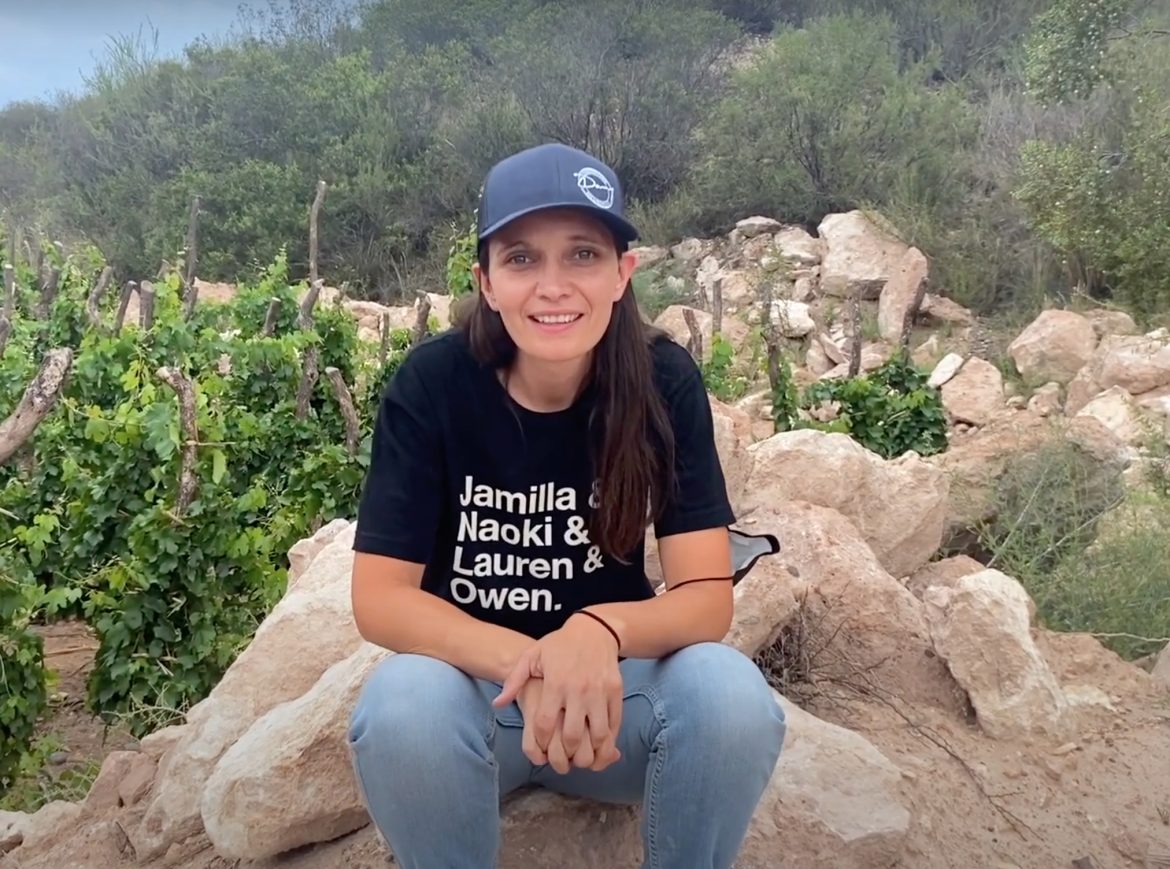Casarena winery in Mendoza has replanted an old Malbec vineyard in their new Naoki vineyard, in a rather interesting terroir! Winemaker Martina Galeano talks about the terroir of Luján de Cuyo, as well as the particularities of their ‘elephant cemetary’ vineyard and the fascinating story of rescuing some older vines. She also explains in this interview why Lujan is a great wine region not only for Malbec but also Cabernet Sauvignon.
Naoki vineyard and the Malbec elephant cemetery with Casarena winemaker Martina Galeano
Video highlights: Amanda Barnes interviews winemaker Martina Galeano
We are in the Naoki cemetery vineyard, can you tell us why this is called the elephant cemetery and how these vines came to be here?
How these vines came here in the first place is because we are building a new restaurant in our winery and we needed to get rid of three rows of vines. We didn’t want to eliminate these vines so we literally replanted them in Naoki. We decided to do a new place because we had never planted in a south ladder and also explore new sites of Naoki and see how plants develop.
The name elephant cemetery is because normally elephants in Africa go to a special place to die and after they die, these places are very sought after by hunters looking for ivory. So we thought these vines are going to spend the rest of their life in Naoki, a very special place, and also because when you look around you feel like you can be anywhere in the world.
You’ve got some interesting plantations in your vineyard where you’ve been planting amongst the native vegetation. What is it that hope the native vegetation, the flowers, the herbs will give to the grape vines?
First of all, we want to be very respectful of the place and preserve the natural flora, it is part of our philosophy. I also think it is very interesting from an aromatic perspective and what it can contribute to the grape, not only in terms of the grape as fruit but also the soil and how the roots of these plants interact with the vine roots and how they exchange nutrients and water. There is a lot of research available about how native plants can help adapt vines or any other plant that is not native to the place, to climatic change and to a new environment.
One of the things that I really love about Casarena is you are entirely focused on Lujan de Cuyo and different vineyards within Lujan de Cuyo. For you as a winemaker, what makes Lujan’s vineyards unique and the profile of Malbec or Cabernet Sauvignon that you get from here?
First of all, it’s about history. In Lujan de Cuyo you can find vines that are more than 100 years old and give you something that is completely different than 10 or 20-year-old vines. We focus very much on studying our soils and microclimate because we believe that the different places within Lujan like Pedriel, Agrelo, Vistalba, Las Compuertas give you very different profiles of Malbec. Even if you go to the Uco Valley you are going to find completely different things. It’s about trying to look for the diversity of Malbec and Cabernet Sauvignon. Cabernet Sauvignon from Lujan de Cuyo matures very well and reaches that tannin maturation that you might not get in other areas here in Mendoza. There is a lot to explore here in Lujan de Cuyo so we still have a long way to go.
Read more about Casarena winery in our winery guide online!
Want to know more about the
wine regions of Argentina?
ORDER YOUR COPY of The South America Wine Guide now!
E-book AVAILABLE ONLINE too.
Interested in watching more videos?
Aconcagua terroir: From Costa to Andes with Viña Errazuriz winemaker Francisco Baettig
Exploring Miguel Torres’ Escaleras de Empedrado in Maule
The extreme terroir of Calchaquí with Colomé winemaker Thibaut Delmotte
Cellaring wine under water… A tasting of Bodega Oceanica’s Ultramar Albariño in Uruguay

